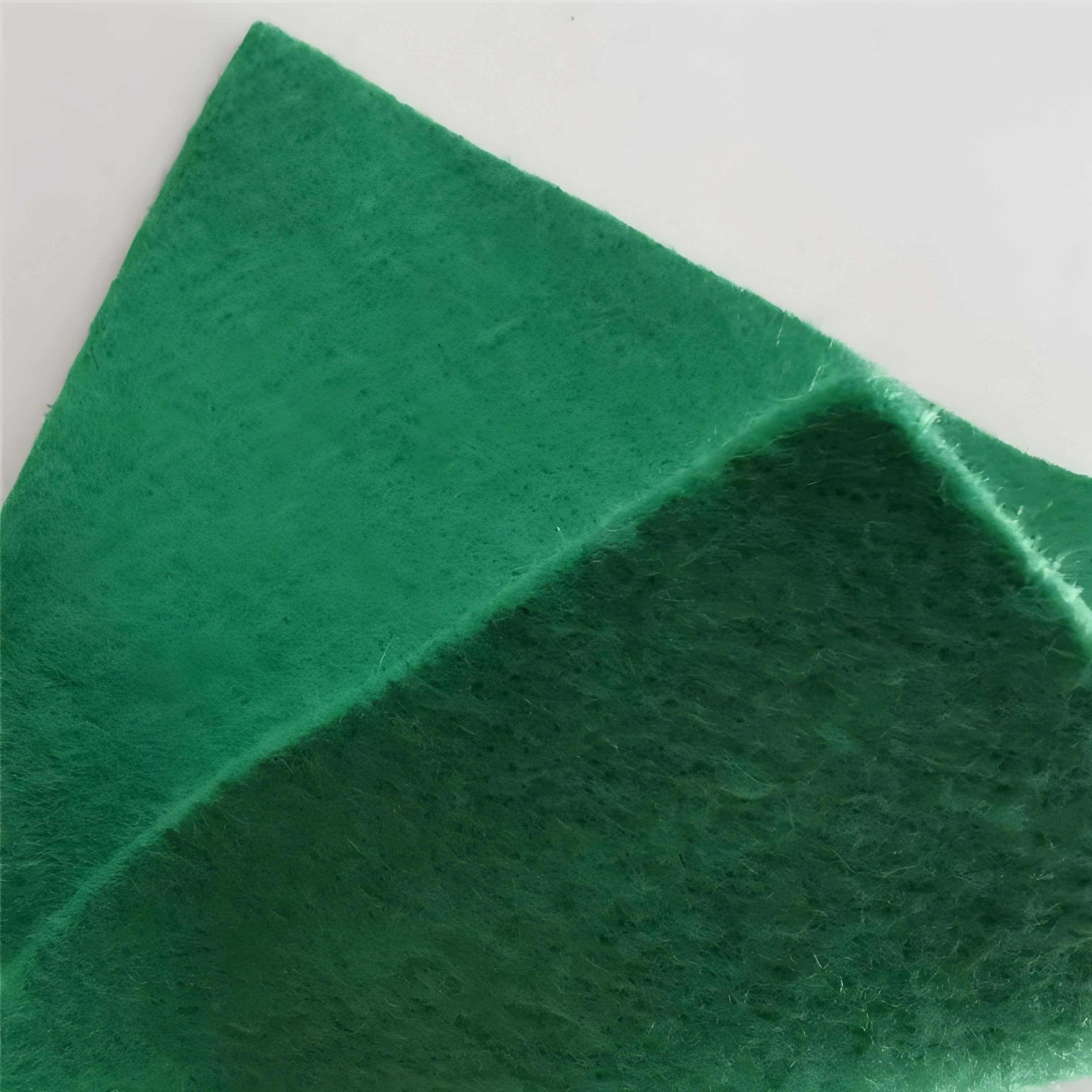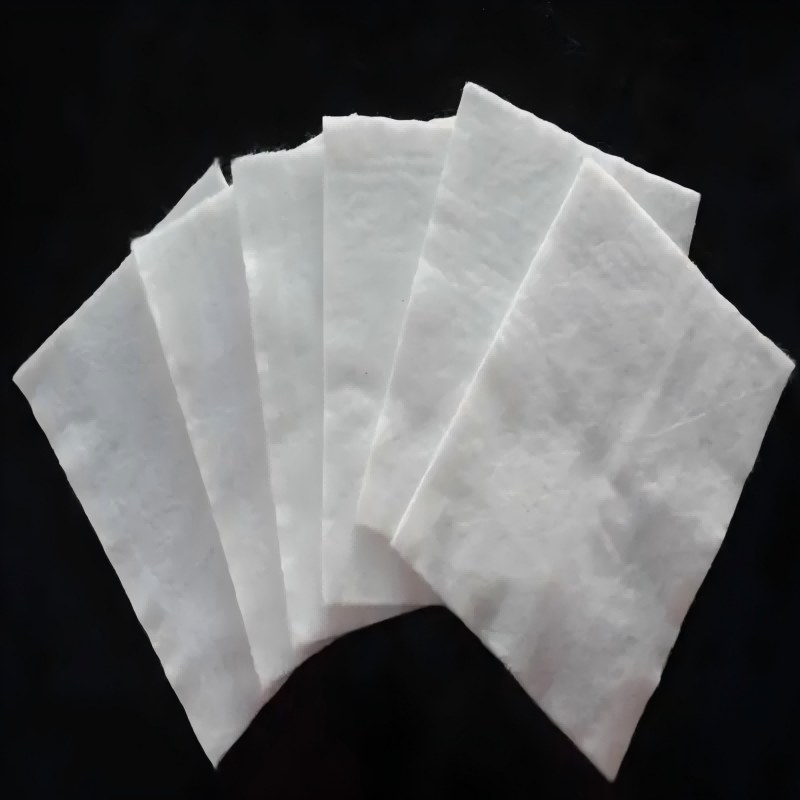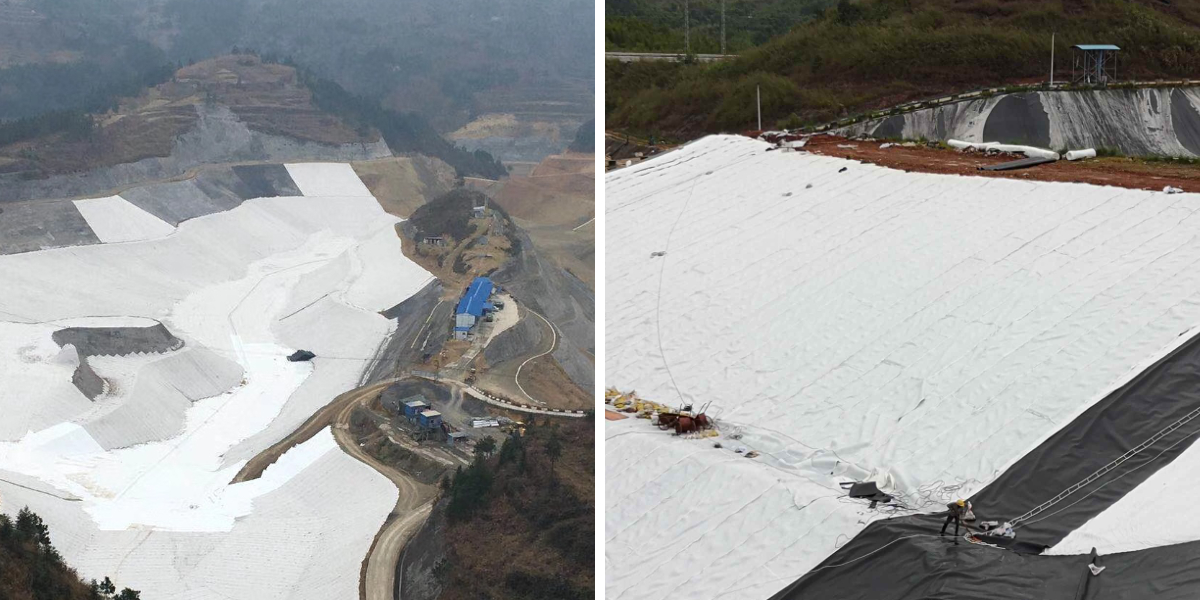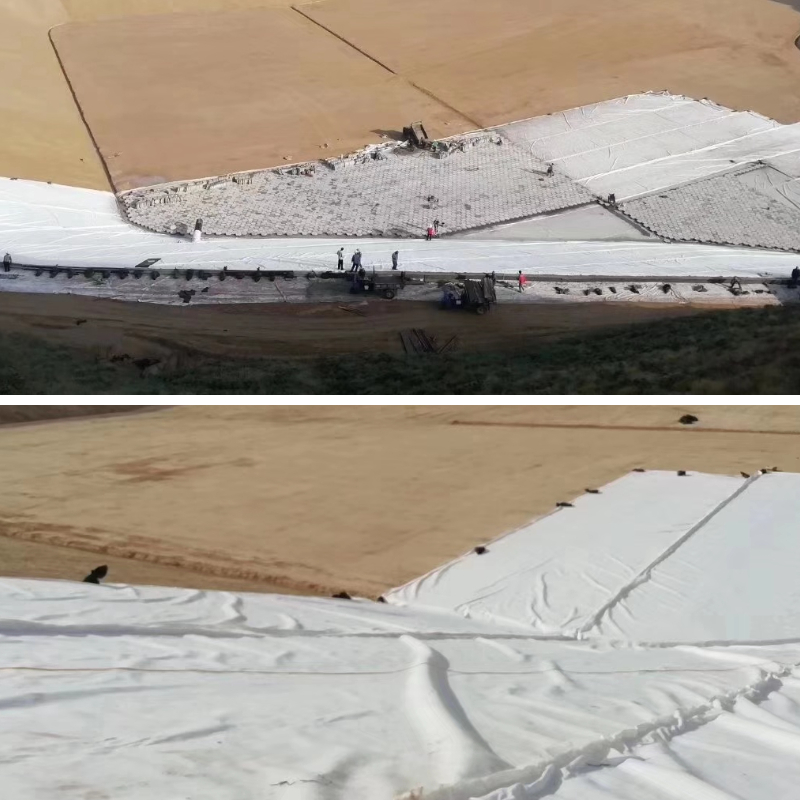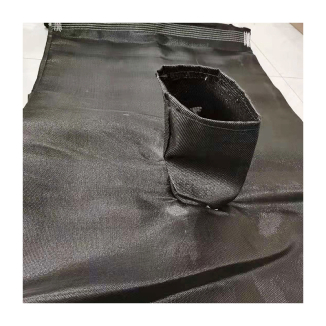Geotextile 130g
1.Strong isolation: Separate soil, sand and gravel from the foundation, prevent particle mixing, stabilize the base layer and reduce settlement.
2.Permeable soil protection: The pores are permeable and smooth, intercepting soil particles, balancing drainage and preventing loss.
3.Weather resistant and damage resistant: Resistant to stretching, corrosion, acid, alkali, UV rays, and long-term durability outdoors.
4.Wide scene adaptation: Suitable for roadbed, water conservancy, garden and other scenes, easy to install and cost-effective.
Product Introduction
1、 Basic attributes
Geotextile 130g is made of high molecular weight synthetic fibers such as polypropylene and polyester as the core raw materials, and is woven through professional processes such as needle punching, weaving, or hot rolling. 130g "refers to the weight per square meter of fabric, which allows it to maintain a lightweight texture (without obvious heaviness when unfolded individually) while forming a tight and uniform fiber structure, with moderate flexibility and tear resistance mechanical strength. Whether it is rugged mountains, damp riverbeds, or flat roadbeds, they can be laid in accordance with the terrain to meet the basic needs of diverse construction environments.
2、 Core functions
The core function focuses on the synergistic effect of isolation, filtering, and protection. In terms of isolation, with uniform fiber gaps, it can effectively separate media such as soil, sand and gravel, and foundation fillers with different particle sizes, prevent particles from infiltrating and mixing with each other, and avoid structural settlement caused by material delamination failure; The filtering function achieves "water passing through soil retention" through precise pore design, allowing rainwater, groundwater and other moisture to penetrate and be discharged smoothly, while firmly intercepting soil fine particles to prevent soil erosion or pipe surge; The protective function is reflected in the protection of the grassroots structure, which can buffer external load impacts, reduce mechanical crushing damage, and lower the risk of damage to core structures such as foundations and dams caused by environmental factors such as direct ultraviolet radiation and acid-base erosion.
3、 Main features
Outstanding weather resistance: after anti-aging treatment, the fiber material has excellent tensile resistance (the breaking strength can meet the requirements of industry standards), can withstand industrial sewage, underground saline alkali and other acid and alkali erosion, can withstand ultraviolet degradation when exposed to outdoor sunlight for a long time, and has good resistance to mechanical friction and trample impact during construction, to ensure a stable service life of more than 5 years in outdoor projects such as roads and water conservancy.
Widely adaptable to various scenarios: With its multifunctional characteristics, it is widely used in roadbed reinforcement and drainage layer isolation of road engineering, anti-seepage and filtration of water conservancy dams, slope protection and rainwater garden drainage of garden landscapes, underground pipeline backfill protection of municipal engineering, and other scenarios, without the need to frequently change product types due to scene differences.
Excellent construction and economy: lightweight texture (single roll length can reach 50-100 meters, easy to transport) and strong flexibility, can be flexibly cut according to construction size, no complex fixed equipment is required during laying, and manual splicing and compaction can be quickly completed; Compared to traditional sand and gravel isolation layers, the cost is lower and the construction efficiency is increased by more than 30%, combining practical value and economic advantages.
Product Parameters
project | metric | ||||||||||
Nominal strength/(kN/m) | |||||||||||
6 | 9 | 12 | 18 | 24 | 30 | 36 | 48 | 54 | |||
1 | Longitudinal and transverse tensile strength / (kN/m) ≥ | 6 | 9 | 12 | 18 | 24 | 30 | 36 | 48 | 54 | |
2 | Maximum elongation at maximum load in longitudinal and transverse directions/% | 30~80 | |||||||||
3 | CBR top penetration strength /kN ≥ | 0.9 | 1.6 | 1.9 | 2.9 | 3.9 | 5.3 | 6.4 | 7.9 | 8.5 | |
4 | Longitudinal and transverse tearing strength /kN | 0.15 | 0.22 | 0.29 | 0.43 | 0.57 | 0.71 | 0.83 | 1.1 | 1.25 | |
5 | Equivalent aperture O.90(O95)/mm | 0.05~0.30 | |||||||||
6 | Vertical permeability coefficient/(cm/s) | K× (10-¹~10-), where K=1.0~9.9 | |||||||||
7 | Width deviation rate /% ≥ | -0.5 | |||||||||
8 | Unit area mass deviation rate /% ≥ | -5 | |||||||||
9 | Thickness deviation rate /% ≥ | -10 | |||||||||
10 | Thickness coefficient of variation (CV)/% ≤ | 10 | |||||||||
11 | Dynamic perforation | Puncture hole diameter/mm ≤ | 37 | 33 | 27 | 20 | 17 | 14 | 11 | 9 | 7 |
12 | Longitudinal and transverse fracture strength (grab method)/kN ≥ | 0.3 | 0.5 | 0.7 | 1.1 | 1.4 | 1.9 | 2.4 | 3 | 3.5 | |
13 | Ultraviolet resistance (Xenon arc lamp method) | Longitudinal and transverse strength retention rate% ≥ | 70 | ||||||||
14 | Ultraviolet resistance (fluorescence UV lamp method) | Longitudinal and transverse strength retention rate% ≥ | 80 | ||||||||
Product Application
1、 Road engineering field
In the construction of highway and railway subgrade, 130g geotextile is often laid between the subgrade soil and the sand and gravel cushion layer to play a role in isolation and reinforcement. It can prevent the mutual infiltration and mixing of roadbed soil and sand and gravel particles, avoiding roadbed settlement caused by material layering failure; At the same time, relying on its tensile resistance, it disperses the impact of vehicle loads, reduces roadbed deformation, and extends the service life of roads. In addition, in the drainage layer of the pavement base, its permeability can accelerate the removal of accumulated water inside the base and reduce the risk of freeze-thaw damage.
2、 Water conservancy and anti-seepage engineering
In water conservancy dams, channel slopes and other projects, using 130g geotextile as a filter layer can effectively solve the problem of "pipe surge". Laying between the soil and impermeable membrane on the upstream face of the dam or channel slope can not only allow the seepage water to be smoothly discharged, but also intercept fine soil particles, preventing dam collapse caused by soil erosion; In river regulation, laying it on the riverbed or bank slope can protect the riverbed soil from water erosion, and with the help of ecological bags and other materials, achieve slope stability and ecological restoration.
3、 Landscape and Architecture Engineering
In landscape construction, 130g geotextile is often used to isolate planting areas from drainage layers. In scenes such as rooftop greening, flower beds, and rain gardens, laying them under planting soil can prevent soil particles from seeping into drainage pipes with rainwater and causing blockages, while ensuring the infiltration and discharge of excess water to prevent plant root rot; In slope greening, the surface soil can be fixed and sprayed with spraying technology to prevent seed loss, providing a stable environment for vegetation growth.
4、 Municipal and Underground Engineering
During the backfilling construction of municipal underground pipelines (such as sewage pipes and gas pipes), 130g geotextile can be wrapped around the pipeline or laid in the backfill soil around the pipeline to reduce the friction damage of soil particles to the outer wall of the pipeline, while buffering the pressure impact of the backfill material and protecting the structural integrity of the pipeline; In landfill engineering, it is used as an intermediate isolation layer to separate the leachate from different landfill areas, prevent the spread of pollutants, and assist in improving the stability of the anti-seepage system.
130g geotextile plays a key role in various fields such as roads, water conservancy, landscaping, and municipal engineering due to its comprehensive performance of isolation, filtration, protection, and permeability. Its core value lies in ensuring the stability and high efficiency of engineering structures by preventing medium mixing, intercepting particle loss, buffering external impacts, and other methods. At the same time, it adapts to various scenarios and is easy to construct, becoming a practical material in various basic engineering projects.


